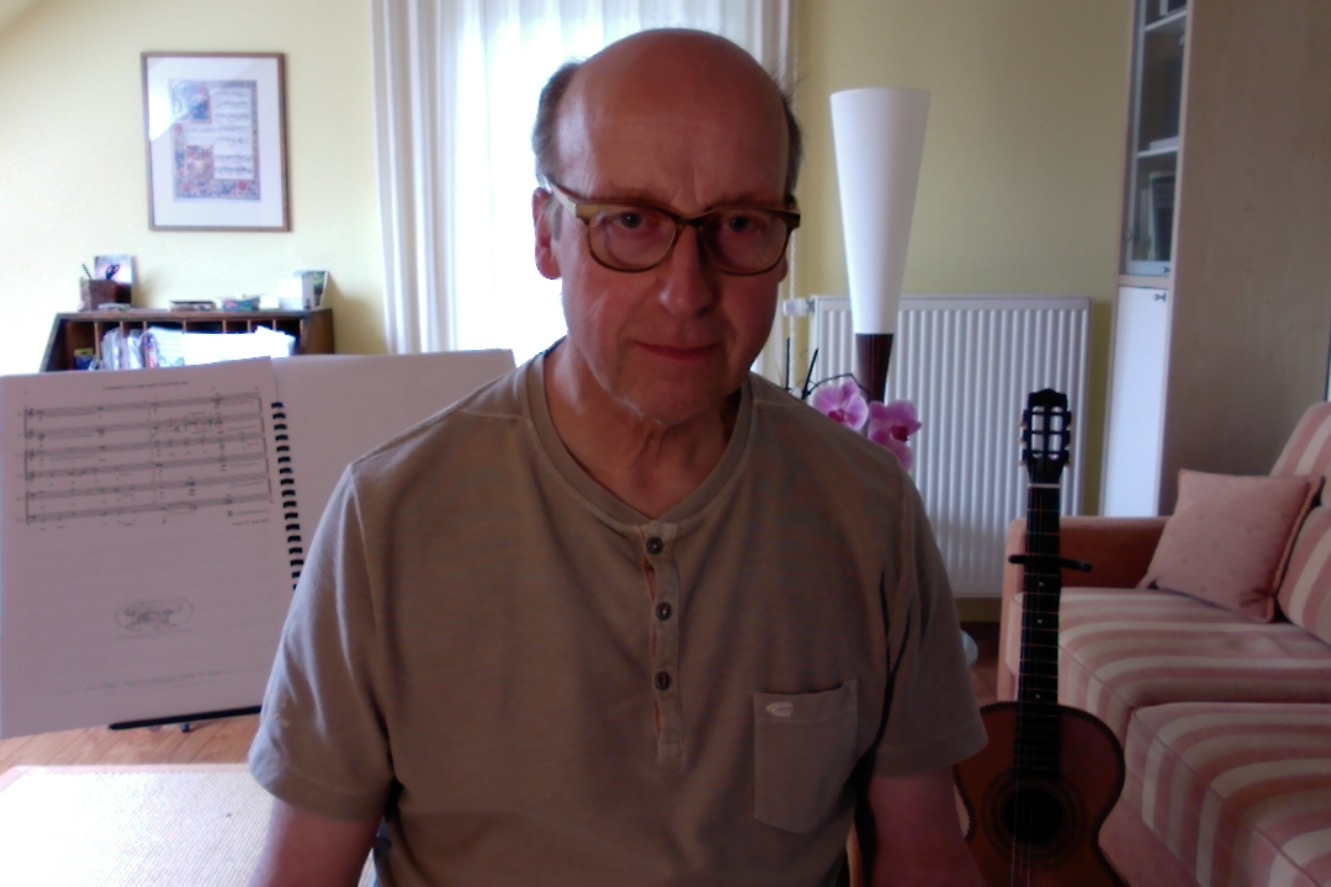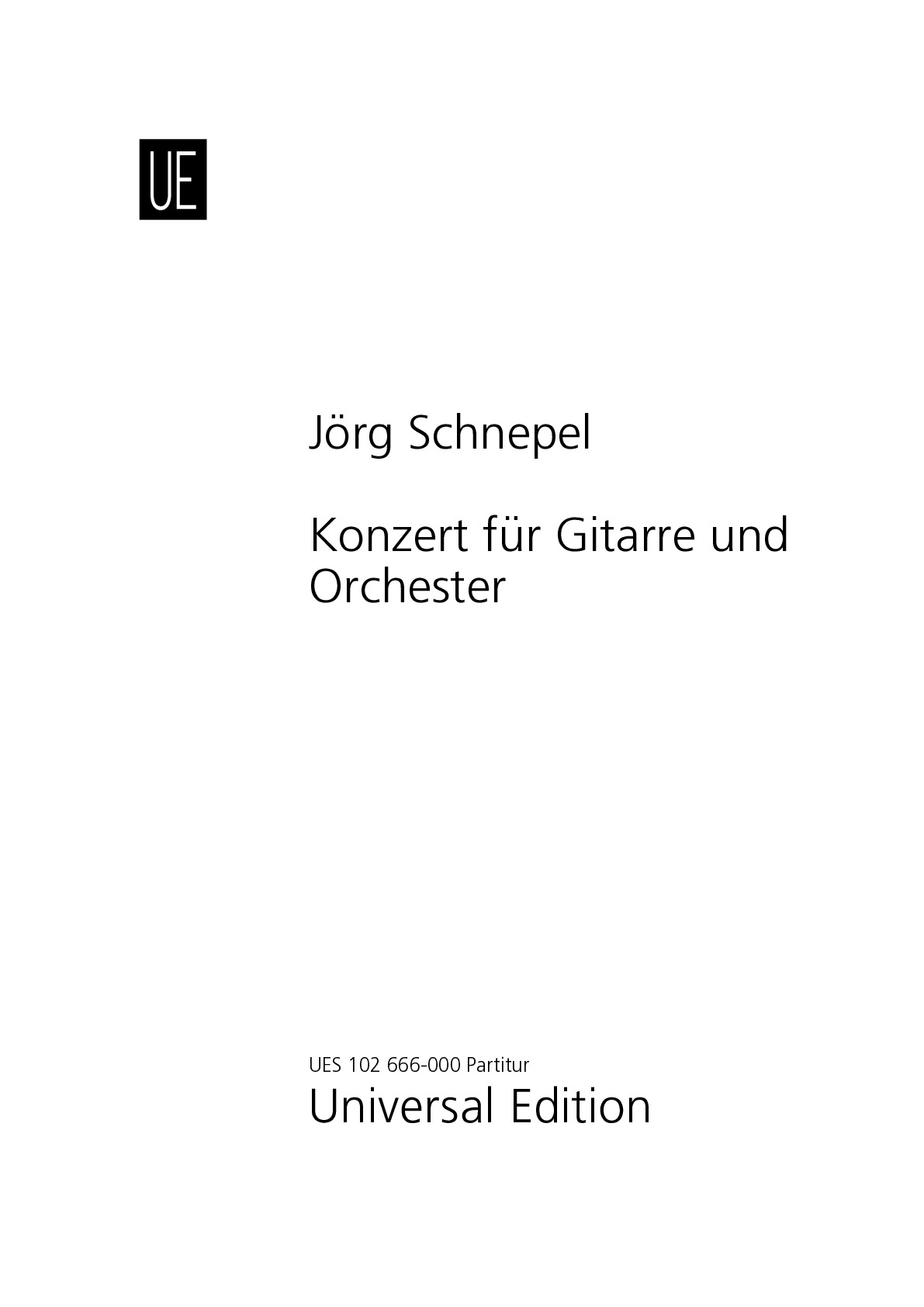

Jörg Schnepel
Konzert für Gitarre und Orchester
Short instrumentation: 1 1 1 1 - 0 0 0 0, mar, str
Duration: 26'
Solos:
guitar
Instrumentation details:
flute
oboe
clarinet in Bb
bassoon
marimba
violin I (6 players)
violin II (4 players)
viola (4 players)
violoncello (2 players)
double bass
Konzert für Gitarre und Orchester
Printed/Digital
Translation, reprints and more

Jörg Schnepel
Gitarre (Konzert für Gitarre und Orchester)Type: Solostimme(n)

Jörg Schnepel
Konzert für Gitarre und OrchesterType: Dirigierpartitur
Sample pages
Audio preview
Work introduction
Concerto for guitar and orchestra
In 2013, I was able to realise my long-cherished wish to write a concerto for "my instrument" — the guitar. At the time, I was particularly interested in juxtaposing the solo instrument with an orchestra that lived up to its name: thus, the obligatory strings are joined by four solo woodwinds. Moreover, the addition of the marimba provides delightful tonal and rhythmic accents. However, the idea was not for the instruments to be too extensive, such that the dynamic balance would not end up being detrimental for the guitar. Thus, unfortunately, the brass instruments had to be left out.
The first movement — a taut Allegro risoluto — displays all the characteristics one might generally expect of a concerto movement: both the guitar and the orchestral parts develop the movement with ever new material, whereby the music does not appear "top-heavy" at all, but often gives the performers the opportunity to brilliantly shape the playing and with bravura.
If the orchestral parts have an equal status with respect to the solo instrument, this "democratisation" of the instruments is probably the most striking difference compared to the concertos of the classical era — e.g., those of Mauro Giuliani, Ferdinando Carulli or Francesco Molino — in which the orchestra often has only an accompanying function.
As a result, the orchestral tuttis are well-distributed and can be experienced naturally from the musical development, such that there are always new and increasing chamber music instrumental parts over long stretches of the concert. This colourful organisation of the musical movement can be experienced especially in the opening movement of the present concerto. By contrast, the guitar's solo entries are comparatively less frequent and, first and foremost, shorter.
The second movement is a broadly flowing canzone in a polyphonic structure, as we know it from the heyday of the mid- 16th century. At the beginning, however, the string parts are consistently worked through dodecaphonically in serial technique. From studying the score, and even more from listening to this music, it becomes clear that the orchestra seems increasingly symphonic in design. The orchestral introduction alone, with 46 large bars in 4/2 time, creates a considerable tonal contrast to the first movement. This almost sacred expanse is reflected in the use of a wide variety of polyphonic structures, such as imitation, canon,fugue, free counterpoint and even ten-part harmony, whereby the second full tutti in F minor in particular has a late Romantic touch. However, the final word of this movement is given to the guitar with the renewed beginning of the initial tonal material, which is admittedly very much modified and concludes the movement with the strings and woodwinds pensively and sensitively in C-sharp minor and in ppp.
The third movement was not written until four years later, but was completed then in a short time. More time and space are now given to the formulation of the musical material. The melodic line is increasingly chromatic, losing its tonal binding while gaining individual freedom. The harmonic events are now clearly more complex and the rhythms are more accentuated and marked by conflict. In concentrated form, these stylistic differences from the two previous movements are particularly perceptible in Interludium I: an extended quintet of flute, marimba, guitar, viola and double bass. The second core piece of this movement is the extensive guitar cadenza, in which, in addition to free, rhapsodic sections, thematic references are made back to the first and second movements. Only a short final tutti is needed to conclude the composition.
Despite all the stylistic differences between the 1st and 2nd movements and the 3rd movement, this circumstance is, in my view, more of a gain in variety than a loss of homogeneity.
The temporal extension of this concerto for guitar and orchestra has turned out to be quite lavish, with a playing time of around 26 minutes. The degree of difficulty with regard to realising this musically, namely with the guitar, can be described as moderate over long stretches, which is not self-evident!
This might also help to make this concert accessible to a wider public.
Jörg Schnepel, 01 June 2022
